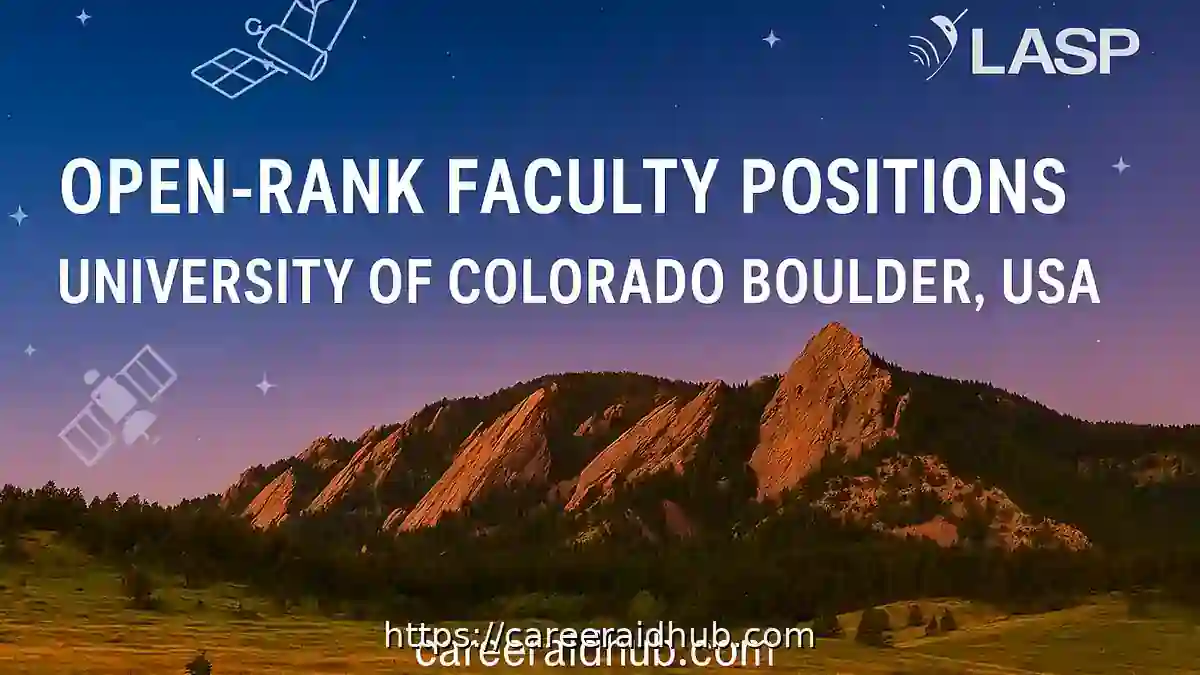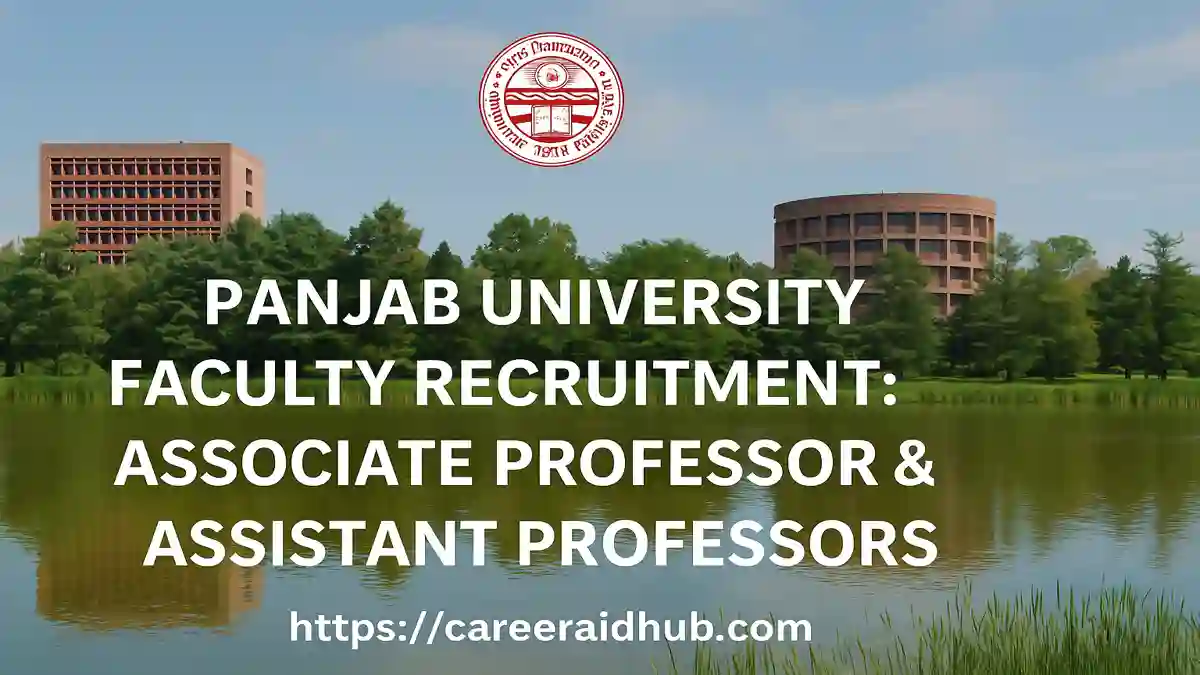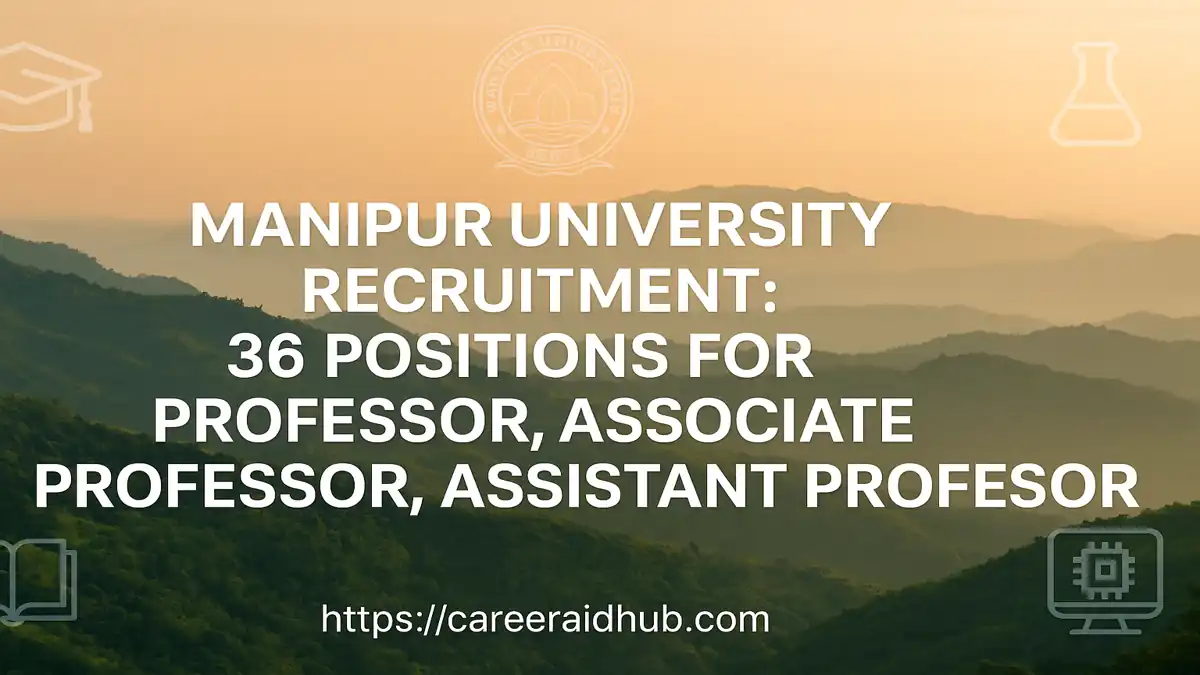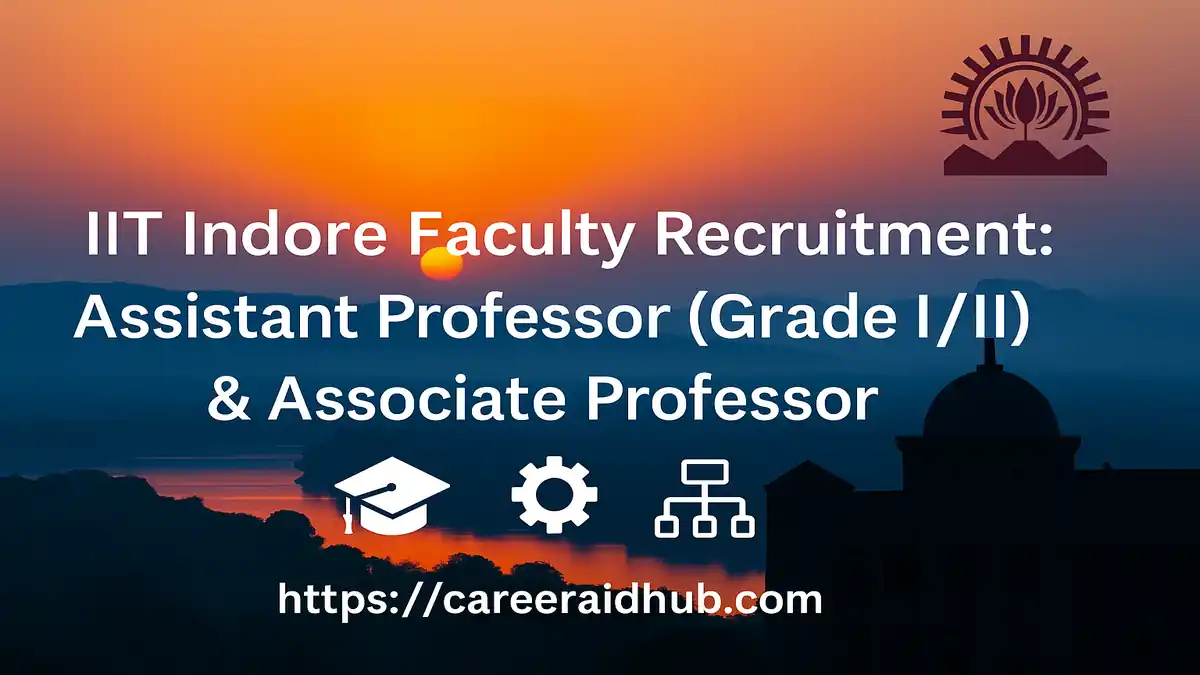Overview
The Laboratory for Atmospheric and Space Physics invites applications for open-rank faculty positions in atmospheric science. LASP seeks one to two scholar-educators who will launch and sustain vibrant, externally funded research programs that complement and extend institute strengths across atmospheric dynamics, radiation and climate, chemistry, and aerosol-cloud physics. Appointees will teach and mentor at both undergraduate and graduate levels and contribute to service within LASP, their tenure home department, and the wider profession.
Join the University of Colorado Boulder’s Laboratory for Atmospheric and Space Physics (LASP) as open-rank faculty in atmospheric science. Build a high-impact research group, teach across levels, and leverage LASP’s end-to-end space mission ecosystem. Competitive salary ranges, exceptional benefits, and unparalleled Boulder research networks position you for long-term leadership.
Review of applications begins November 10, 2025 and continues until the positions are filled. Because competition is strong, candidates should submit complete dossiers well before the initial review date.
Location: Boulder, Colorado, USA
Employment Type: Faculty (Assistant, Associate, or Full Professor)
Schedule: Full-Time • Requisition: 67174
Date Posted: September 8, 2025 • Posting Close Date: November 9, 2025
Application Portal: CU Boulder Jobs (applications by email are not accepted)
What sets LASP apart
- End-to-end capability: from conceptand instrument development to operations and data science.
- Extensive collaborations with campus departments and the Boulder research community.
- A culture that values inclusive mentoring, transparency, and research excellence.
About LASP
Founded a decade before NASA, LASP has pioneered space research for more than 75 years. Today, the institute employs 700+ scientists, engineers, technologists, and students, enabling rapid translation of scientific questions into flight-ready payloads and mission operations. This integration yields a uniquely fertile environment for atmospheric scholars who use space-based observations or design novel retrievals and models.
Cross-campus affiliation
Faculty are rostered in one or more departments—commonly Atmospheric and Oceanic Sciences, Astrophysical and Planetary Sciences, Physics, Chemistry, Aerospace Engineering Sciences, and Geological Sciences. Your tenure home will align with your disciplinary training and teaching interests, while LASP provides research infrastructure, partnerships, and mission opportunities.
Research Areas of Interest
LASP welcomes applicants working across observational, experimental, theoretical, and computational approaches to Earth and planetary atmospheres, including exoplanets. Strengths especially aligned with LASP’s mission portfolio include:
Core domains
- Atmospheric dynamics: circulation, waves, turbulence, and coupling across scales.
- Radiation and climate physics: radiative transfer, feedbacks, and emergent climate behavior.
- Aerosols and clouds: microphysics, aerosol-cloud interactions, and climate forcing.
- Atmospheric chemistry: reactive species, composition trends, and multiphase processes.
Space-enabled directions
- Space-based observations and retrievals: satellite instrument use, calibration/validation, Level-1/2/3 product development, and uncertainty analysis.
- New instrument concepts: technology-ready experiments, smallsat and hosted payload architectures, and pathfinder missions.
- Data assimilation and modeling: adjoint/ensemble methods, ML-augmented parameterizations, and high-performance workflows.
Cross-cutting methods
- Machine learning and AI for retrievals and parameterization.
- HPC and cloud computing for large-ensemble climate/chemistry simulations.
- Open science and reproducible research practices.
What You Will Do
Research leadership
- Build a high-impact research group addressing frontier atmospheric questions and sustaining external funding.
- Develop collaborative proposals with LASP engineers, mission scientists, and campus partners.
Teaching and mentoring
- Teach undergraduate and graduate courses in your tenure home department, integrating evidence-based pedagogy.
- Mentor graduate students and postdoctoral scholars; promote safety, inclusion, and research integrity.
Strategic contribution and service
- Advance LASP’s strategic objective to study atmospheres from space by leveraging satellite data and mission participation.
- Contribute service to departmental governance, professional societies, and the broader community, commensurate with rank.
Who Should Apply
Minimum qualifications
- PhD in Atmospheric Science, Planetary Science, Physics, Chemistry, or a closely relatedfield.
- A record of research and teaching excellence consistent with appointment at an R1 doctoral university (expectations scale by rank).
- PhD in Atmospheric Science, Planetary Science, Physics, Chemistry, or a closely related
Ideal profile
- A compelling vision for a cohesive, externally funded agenda with measurable impact.
- Documented inclusive mentoring and student success strategies.
- Evidence of interdisciplinary collaboration, particularly at the interface of observing systems, theory, and modeling.
- Strong communication and leadership skills.
Salary, Rank, and Benefits
Academic-year salary ranges (anticipated)
- Assistant Professor: $110,000–$118,000
- Associate Professor: $118,000–$140,000
- Professor: $140,000–$160,000
Comprehensive benefits
CU Boulder provides medical, dental, and retirement plans, generous paid time off, tuition assistance for employees and dependents, and an ECO Pass for local transit. The Boulder setting offers immediate access to world-class outdoor recreation and a thriving academic–industrial ecosystem.
Campus Policy You Should Know
For finalists in tenured appointments, CU Boulder conducts a reference check program that reviews prior institutional conduct related to sexual misconduct, harassment, and/or discrimination before making hiring decisions. Final candidates must complete an Authorization to Release Information.
How to Apply (CU Boulder Jobs Portal)
Please submit all materials through the CU Boulder Jobs portal. Email applications are not accepted.
Required materials
- Curriculum Vitae (with complete publicationlist).
- Cover Letter (1–2 pages) outlining interest in LASP/CU Boulder and short- and long-term career goals.
- Statement of Research Goals (≤3 pages) summarizing prior work and a forward-looking trajectory with plans for funding, personnel development, and impact.
- Statement of Teaching Philosophy (≤2 pages), including mentoring practices and inclusive pedagogy.
- Research Papers: Three representative peer-reviewed (or in review) papers combined as one PDF.
- References: Contact details for three referees; letters may be requested as the search advances.
- Curriculum Vitae (with complete publication
For informal questions, contact the Search Committee Chair, Peter Pilewskie ([email protected]). Do not send application materials to this email.
Timeline
- Posting close date: November 9, 2025
- Initial review begins: November 10, 2025
- Search remains open until positions are filled
Next cycle (indicative): Based on recent patterns, anticipate the subsequent call in October–November 2026; we will update soon once official timelines publish.
Why Boulder—and Why LASP
Boulder consistently ranks among the United States’ most desirable research hubs. Federal laboratories, a high-density university network, and mission-driven companies create a collaborative ecosystem for atmospheric science. At LASP, you can convert ideas into observations from space, engaging with instrument teams, operations specialists, and data scientists who share a single campus footprint.
Advantages at a glance
- Direct pathways from proposal to flight.
- Access to diverse satellite datasets and calibration/validation campaigns.
- Opportunities to shape curriculum and graduate training across departments.
Commitment to Equity and Inclusion
The University of Colorado is an Equal Opportunity Employer and complies with all applicable federal, state, and local laws regarding nondiscrimination. LASP is committed to a workplace where all individuals are treated with dignity and respect and welcomes applications from protected veterans and individuals with disabilities.
Under the Colorado Job Application Fairness Act, applicants may redact age-identifying information (e.g., birth year, dates of attendance/graduation) from application materials without penalty.
Ready to Apply?
Gather your dossier, refine your statements, and submit via CU Boulder Jobs before the posting close date. Whether your expertise lies in dynamics, radiation, chemistry, aerosols and clouds, or space-based atmospheric observations, LASP provides the infrastructure and partnerships to elevate your scholarship—and to educate the next generation of atmospheric scientists.
Feature Table (Quick Facts)
Feature | Details |
Program Name | Open-Rank Faculty Positions in Atmospheric Science — LASP |
Host Country | United States (Boulder, Colorado) |
Funded By | University of Colorado Boulder |
Duration | Academic-year appointment; continuing per university policy |
Study Mode | Full-time, on-campus faculty |
Eligibility | PhD in atmospheric science, planetary science, physics, chemistry, or related field; record of research and teaching excellence |
Financial Support | Academic-year salary by rank; comprehensive CU Boulder benefits (medical, dental, retirement, PTO, tuition assistance, ECO Pass) |
Fields of Study | Atmospheric dynamics, radiation and climate physics, aerosols/clouds, atmospheric chemistry, space-based observations, modeling/ML/HPC |
Deadline | 11/09/2025 |
Official Website | Click here |
Conclusion
The LASP open-rank search invites atmospheric scientists whose scholarship spans observation, theory, computation, and mission applications. With access to integrated science, engineering, and operations, you can build a resilient research program, shape innovative curricula, and mentor emerging leaders. Submit your application through the CU Boulder Jobs portal and position yourself at the forefront of atmospheric discovery.
References
Frequently Asked Questions (FAQs)
Applicants need a PhD in atmospheric science, planetary science, physics, chemistry, or related fields; moreover, they must show research and teaching excellence.
LASP welcomes dynamics, radiation and climate physics, aerosols and clouds, atmospheric chemistry, modeling, and, importantly, space-based observations and retrievals.
Your tenure home aligns with your background and teaching interests; additionally, joint appointments across CU Boulder departments are common.
Not strictly; however, experience with satellite data, instrument concepts, or calibration/validation strongly strengthens your application.
Faculty teach undergraduate and graduate courses; furthermore, they mentor students and postdocs and use evidence-based, inclusive pedagogy.
Prepare a CV, cover letter, research statement, teaching statement, three representative papers, and referee contacts; then apply via the CU Jobs portal.
Reviews begin shortly after the posting close date; therefore, submit early to ensure full consideration.
Anticipated ranges span Assistant, Associate, and Full Professor tiers; in addition, CU offers comprehensive benefits and an ECO Pass.
Yes; CU Boulder conducts a reference check program for final candidates in tenured appointments before hiring decisions.
Typically, searches recur in the fall; consequently, expect another call around October–November, and we will update soon.










